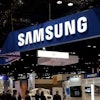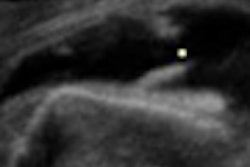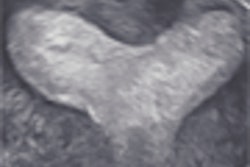CHICAGO - U.S. researchers at this week's American College of Cardiology (ACC) meeting say that ultrasound contrast agents are safe, despite a recent U.S. Food and Drug Administration (FDA) black box warning regarding the use of several commercially available ultrasound contrast agents.
Researchers from Saint Louis University in St. Louis and the University of Nebraska in Omaha found that the safety of the contrast agents is about the same as that of undergoing an echocardiography study without the agents.
"We still use these agents at our hospitals," said Dr. Melda Dolan, an associate research professor of cardiology at Saint Louis University. "However, we are very careful about following these patients carefully after the contrast study is completed. There are many hospitals where the extra staff is not available to monitor these patients, and at those facilities the use of the contrast agents is falling off."
In an ACC presentation Tuesday, Dolan noted that the FDA warning was based on 11 deaths, including four that occurred within 30 minutes of contrast administration, from a total of 2 million doses of the ultrasound contrast agents -- Optison (GE Healthcare, Chalfont St. Giles, U.K.) and Definity (Lantheus Medical Imaging, North Billerica, MA).
As many as 20% to 30% of patients who require echocardiography cannot have a proper test because of various problems, such as body habitus, chest wall deformities, lung disease, or heavy smoking, Dolan said. Contrast agents give doctors the information needed for diagnosis, treatment, and prognosis in this group of individuals who would otherwise have less than optimal scans.
Dolan said the FDA warning suggested the curtailment of contrast use in patients presenting with acute coronary syndromes, respiratory failure, arrhythmias, and pulmonary problems. "These are the patients who need these studies the most," she said.
Dolan and colleagues set out to determine how outcomes among these contrast agents compared with other patients who underwent ultrasound echocardiography without contrast. "We performed a retrospective analysis of about 24,000 patients who had resting echocardiography, seeking to identify patients who experienced death or nonfatal heart attacks in the short term," she explained.
The study found one death and three nonfatal heart attacks. The death occurred in a patient in renal failure who had been hospitalized before doctors requested an echocardiography to determine if the patient's worsening condition was being caused by emboli. The patient succumbed 22 hours later on his 12th hospital day, Dr. Dolan said.
That group of patients was compared with about 6,000 matched patients who did not require contrast. That review of cases revealed seven nonfatal myocardial infarcts and one death. "The difference between these groups was not clinically meaningful," she said. "We felt we were right on the money in having predicted that there was no significant difference in outcomes over whether a contrast agents were used or not."
In another study, researchers attempted to show that contrast agent use, in fact, gave added value to doctors. Images taken with and without contrast were compared with images derived from angiography to determine reperfusion. The contrast images were about 81% as sensitive as the angiography scans, and the noncontrast ultrasounds were about 73% as sensitive as angiography, Dolan said. The difference between contrast and noncontrast images was not statistically significant, she noted.
What was significant was the ability of the ultrasound scans to predict outcomes. Patients who showed normal wall motion and normal reperfusion had a 95% three-year event-free survival. If wall motion was normal and reperfusion was abnormal, survival was 85% without an adverse event; with abnormal wall motion and abnormal reperfusion, the survival dipped to 69% (all p < 0.05).
Dolan said that the data from St. Louis, Nebraska, and the Mayo Clinic in Rochester, MN, are being combined for a future journal publication, which she hopes will be enough evidence to persuade the FDA to reconsider its warning.
By Edward Susman
AuntMinnie.com contributing writer
April 1, 2008
Related Reading
Ultrasound contrast advocates take aim at FDA black box warning, January 3, 2008
Definity to carry warning label, October 12, 2007
U.S. FDA to alert doctors about imaging drugs' risks, October 9, 2007
ASE unveils new stress echo guidelines, September 7, 2007
Contrast media add valuable information in US applications, May 4, 2007
Copyright © 2008 AuntMinnie.com



















